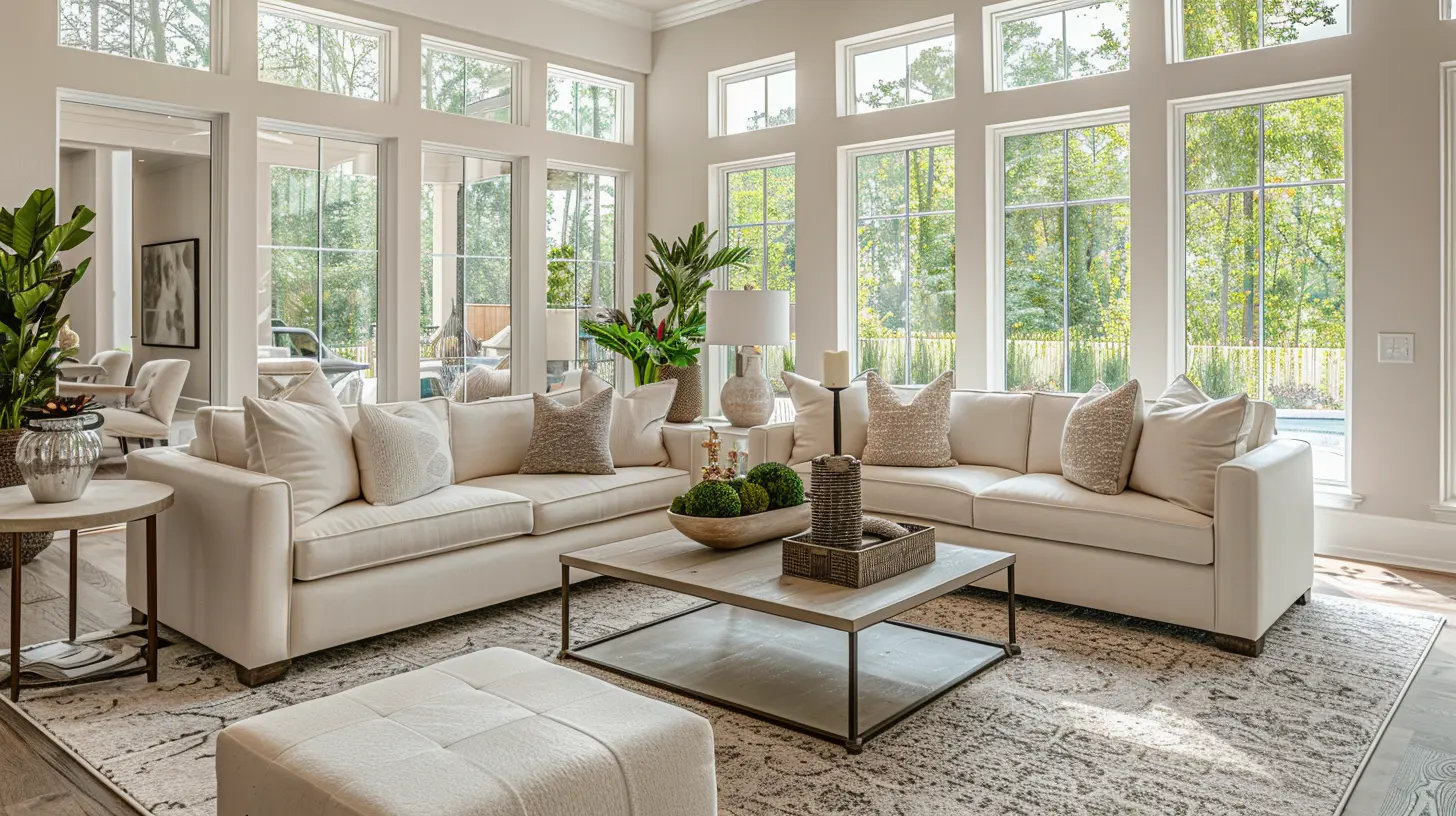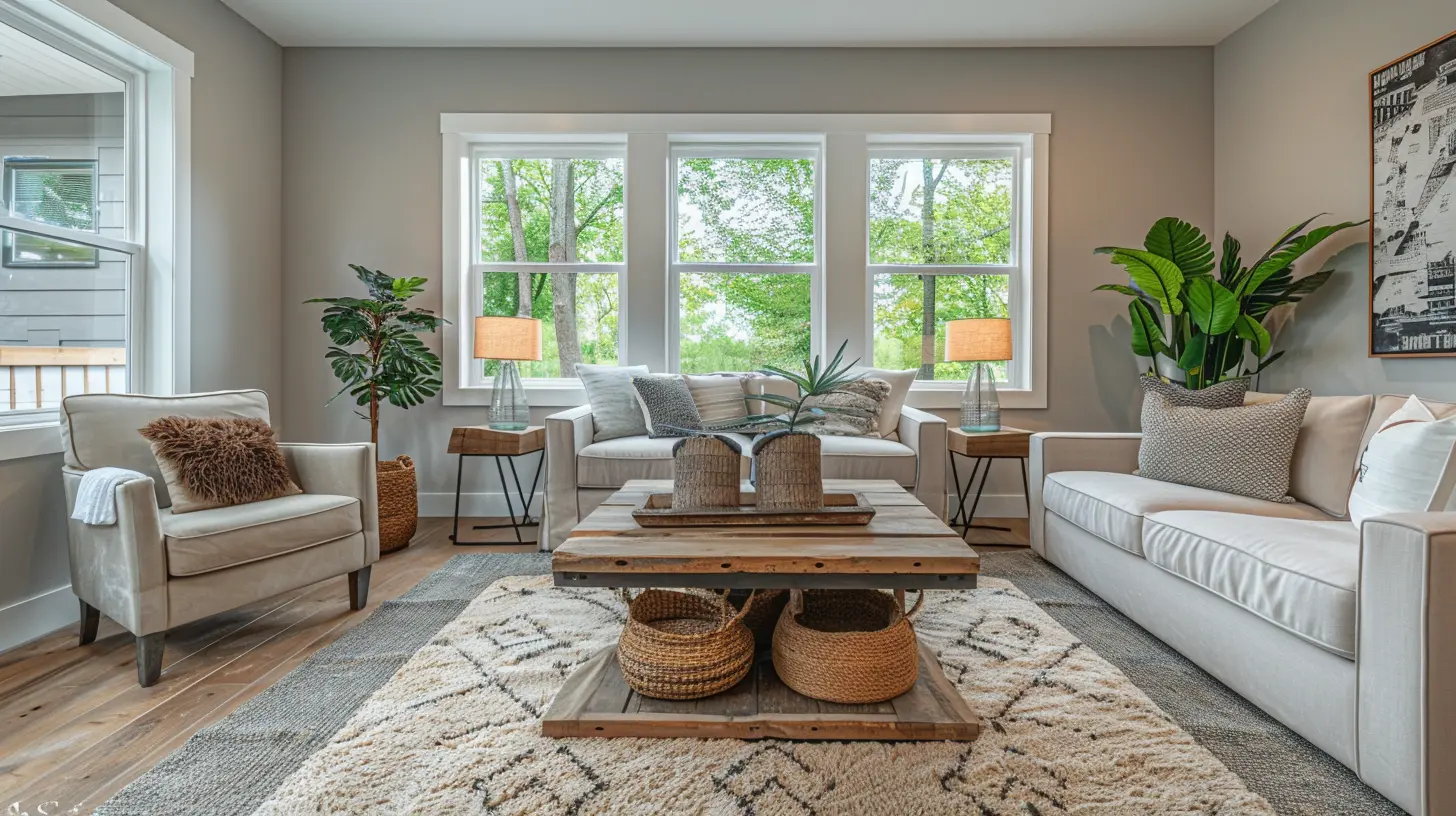How Staging Can Impact a Home’s Appraisal Value
30 July 2025
When selling a home, everyone wants top dollar. But did you know that staging can play a crucial role in determining your home’s appraisal value? Many homeowners focus on renovations and upgrades, but staging is often an overlooked secret weapon. Let's dive into how staging can influence an appraiser’s perception and ultimately boost your home’s value. 
What Is Home Staging?
Simply put, home staging is the process of strategically arranging furniture, decor, and lighting to make a house look more appealing to potential buyers—and yes, even to appraisers. It’s about creating an inviting atmosphere that allows buyers (and appraisers) to see the home’s full potential.Think of it this way: You wouldn’t show up to a job interview in wrinkled clothes and uncombed hair, right? A well-staged home is like a well-dressed candidate—it leaves a strong, positive impression. 
How Appraisals Work and Why Staging Matters
Before we get into the nitty-gritty of staging, let’s quickly cover how appraisals work.When an appraiser evaluates a home, they consider factors like:
- Location – Nearby schools, amenities, and neighborhood appeal.
- Comparable Sales (Comps) – Recent sale prices of similar homes in the area.
- Condition of the Home – Structural integrity, upgrades, and overall maintenance.
- Size and Layout – Square footage and functional space.
Now, here's where staging comes into play: While it won’t change the square footage or location, it can influence how an appraiser perceives your home’s condition and functionality. A staged home typically appears well-maintained, move-in ready, and more valuable overall. 
5 Ways Staging Can Improve Your Home’s Appraisal Value
1. Enhances First Impressions
First impressions matter—a lot. When an appraiser steps into a professionally staged home, they immediately see a clean, well-maintained space. This sets a positive tone from the get-go. On the other hand, an empty or cluttered home might make them focus on imperfections.Think about walking into a luxury hotel room. Everything is arranged neatly, the lighting is perfect, and it just feels expensive. That’s exactly the vibe you want to create with staging.
2. Highlights the Home’s Best Features
Every home has standout features—a beautiful fireplace, large bay windows, or an open-concept kitchen. Staging directs attention to these strengths while downplaying any minor flaws.For example:
- A fresh coat of paint and well-placed lighting can make a small room appear larger and brighter.
- Proper furniture arrangement can make an awkward layout feel functional and inviting.
Without staging, those features might go unnoticed or, worse, overshadowed by visual distractions like clutter or outdated decor.
3. Creates an Emotional Connection
Appraisers are human, too. While they aim to be objective, emotions do play a role in perceived value. A staged home feels comfortable, stylish, and move-in ready. It subtly suggests that the home has been well cared for, which can positively impact the appraiser’s assessment.On the flip side, a home that feels neglected—dusty floors, chipped paint, outdated fixtures—can raise red flags about potential maintenance issues.
4. Helps Define Spaces Clearly
Many homes have rooms that can be ambiguous in function. Is that extra space a home office, a reading nook, or just an awkward corner? Staging clarifies each space’s purpose, making it easier for the appraiser to recognize usable square footage.For example:
- A staged guest bedroom makes the home feel more spacious than an empty or cluttered one.
- A defined home office space adds perceived functionality, a major selling point in today’s work-from-home era.
Without staging, appraisers may struggle to see the full potential of the home—potential that could translate into higher value.
5. Makes the Home Appear Move-In Ready
A staged home looks polished and ready for a new owner. When appraisers see a home that appears well-maintained, they’re less likely to lower its value due to perceived deferred maintenance.Simple fixes like:
✅ Fresh paint
✅ Updated lighting
✅ Modern decor
✅ Decluttered spaces
...can go a long way in reinforcing the idea that the home doesn’t need major repairs, which can positively impact its appraisal outcome. 
Staging Tips to Maximize Your Home's Appraisal Value
Now that we know staging can influence value, let’s talk about how to stage your home effectively.1. Declutter and Depersonalize
Too much clutter can make a home feel small and chaotic. Removing excess furniture, personal items, and knick-knacks allows appraisers (and buyers) to focus on the home itself rather than the stuff inside it.2. Boost Curb Appeal
The first thing an appraiser sees is the exterior. Simple upgrades like fresh landscaping, a clean entryway, and a freshly painted front door can set a positive tone before they even step inside.3. Focus on Key Rooms
Not every room needs to be staged to perfection. Focus on high-impact areas like:- Living room
- Kitchen
- Master bedroom
- Bathrooms
These are the spaces appraisers (and buyers) pay the most attention to.
4. Maximize Natural Light
Bright spaces naturally feel larger and more inviting. Open the curtains, clean the windows, and use warm, soft lighting to create a well-lit environment.5. Use Neutral Colors
Bold colors can be distracting. A fresh coat of neutral paint makes a home feel clean, modern, and allows appraisers to focus on the bones of the house rather than an eccentric color scheme.6. Highlight Recent Upgrades
If you’ve made improvements—new flooring, updated fixtures, energy-efficient windows—make sure they stand out. Appraisers take upgrades into account, so subtly showcasing them through staging is a smart move.Final Thoughts: Does Staging Really Make a Difference?
Absolutely! While staging doesn’t physically change your home’s size or structure, it massively impacts perception—and perception influences value.A well-staged home feels maintained, welcoming, and worth top dollar. And when it comes to something as important as an appraisal, every little advantage counts.
So, before your next appraisal, take some time to stage your home. It could mean the difference between an average valuation and a price that makes you smile.
all images in this post were generated using AI tools
Category:
Home StagingAuthor:

Lydia Hodge
Discussion
rate this article
1 comments
Rhett McKeever
Staging a home can significantly enhance its appeal and potentially increase its appraisal value. By showcasing the property’s best features and creating an inviting atmosphere, sellers can make a lasting impression on appraisers, leading to a higher valuation and a quicker sale. Staging is a smart investment!
August 5, 2025 at 4:29 AM

Lydia Hodge
Absolutely! Staging highlights a home's best features, creating an inviting atmosphere that can elevate appraisal values and expedite sales. It’s a worthwhile investment for sellers.


